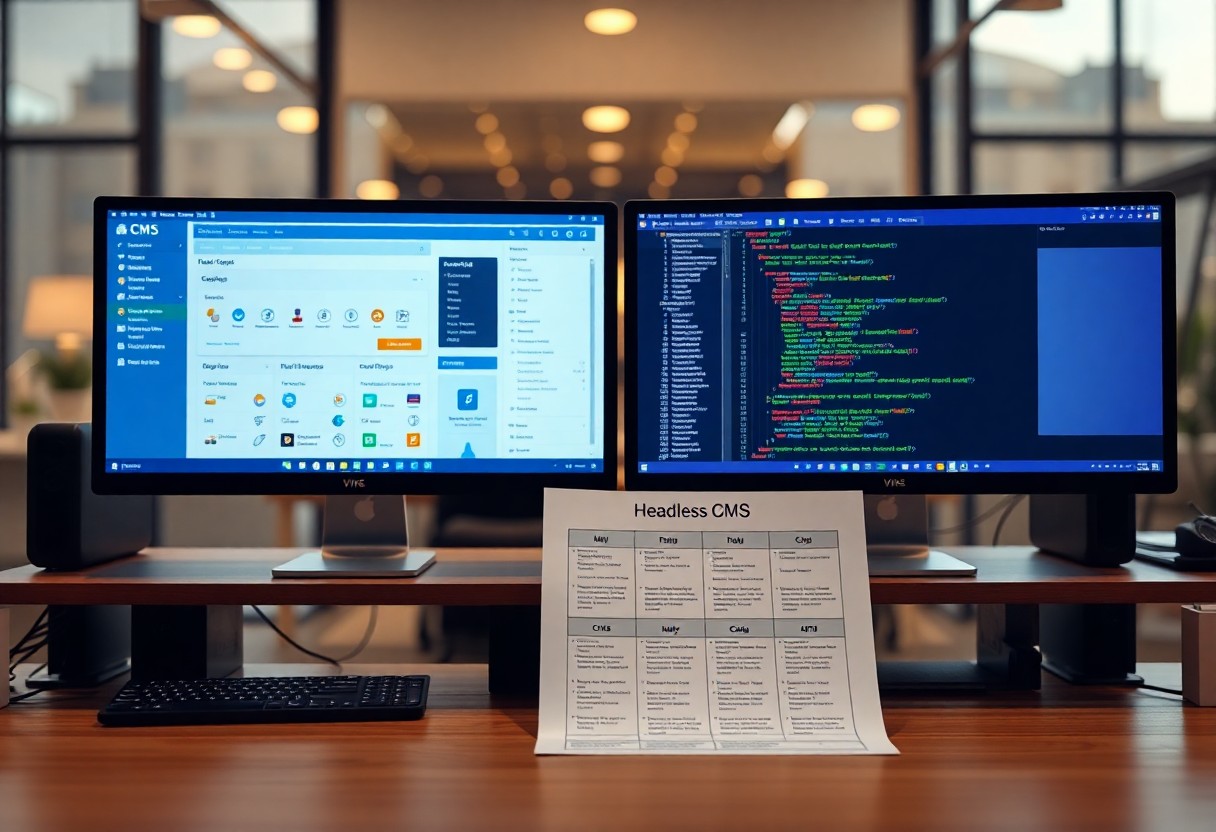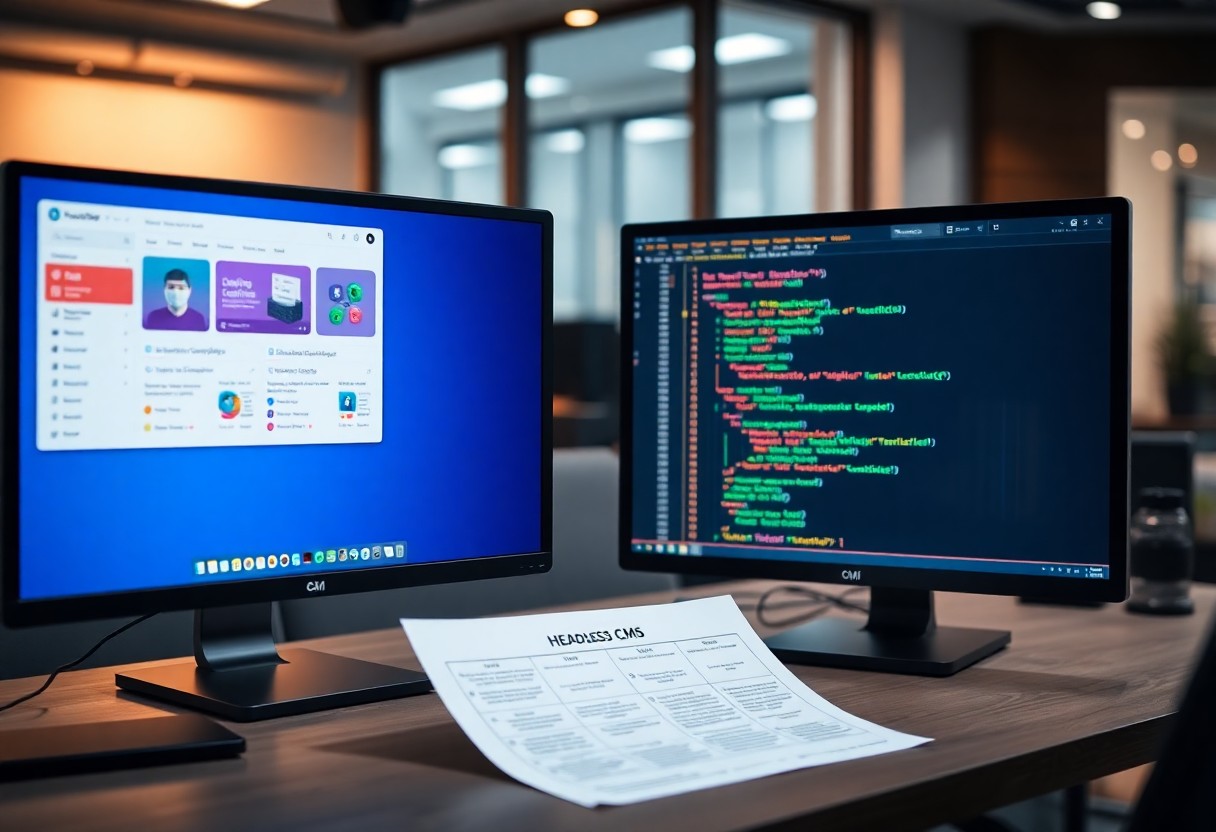You may have heard about the rising trend of headless CMS solutions and wondered how they compare to traditional CMS platforms. This blog post will explore the benefits of a decoupled approach to content management, highlighting why more businesses are shifting towards headless systems. By understanding the key differences and advantages, you can make informed decisions for your digital strategy and better meet the needs of your audience.
The Core Concept: Unpacking Headless CMS
Headless CMS represents a paradigm shift in content management by decoupling the content creation process from its presentation layer. This separation empowers developers and content creators to utilize various technologies and frameworks, allowing for a more flexible and responsive way to deliver content across multiple platforms. As digital experiences continue to evolve, the headless approach is proving to be a powerful solution for businesses seeking agility and scalability in their content strategies.
Defining Headless CMS and Its Key Features
Headless CMS is a backend-only content management system that provides a way to create, manage, and store content without a predefined front-end. This allows developers to use any technology or framework to display content. Key features include:
- API-first architecture
- Content modeling capabilities
- Multi-channel content delivery
- Seamless integration with various front-end technologies
- Enhanced security and performance
- Version control and localization support
Assume that your primary need is to deliver consistent experiences across web, mobile, and other platforms. In that case, a headless CMS empowers your team with the flexibility to do this effectively.
How Headless CMS Separates Content and Presentation
The core innovation of a headless CMS lies in its separation of content and presentation, which allows for content to be created and managed independently of how it is displayed. This decoupled architecture enables multiple applications or devices to access the same content through APIs, ensuring that content can be reused and repurposed efficiently. This approach not only streamlines the workflow between content creators and developers but also allows for rapid development cycles and an adaptive user experience across different platforms.
In practical terms, this means your marketing team can focus on producing high-quality content without needing to synchronize with developers constantly. Whether you’re launching a new app, updating a website, or pushing content to smart devices, a headless CMS facilitates swift adaptations to changing market demands. Companies using headless architectures report faster time-to-market and improved efficiency, significantly bolstering their competitiveness in rapidly evolving digital landscapes.

The Traditional Approach: What Makes a CMS ‘Traditional’?
A traditional CMS integrates content creation and management directly with the presentation layer, creating a unified system. These platforms often offer templates and built-in tools for content formatting, making it easier for users to publish and manage their content without extensive technical knowledge. The monolithic structure of traditional CMS means that all components function together, providing a straightforward solution for businesses looking to manage their web content efficiently.
Characteristics of Traditional CMS Frameworks
Traditional CMS frameworks typically feature a tightly-knit architecture where the backend and frontend are interconnected. You benefit from user-friendly dashboards that allow for easy content creation and editing. These systems often include built-in SEO tools, templates, and plugins that streamline the management of website elements, making them accessible even to those with limited technical skills.
Limitations of Conventional Content Management
Despite their advantages, conventional content management systems often struggle with flexibility and scalability. You may find these systems cumbersome when integrating with modern technologies or adapting to different platforms. As digital content management evolves, the rigid structure of traditional CMS can hinder responsiveness and innovation, preventing your organization from keeping pace with industry demands.
The limitations inherent in conventional content management systems often manifest in performance bottlenecks and lack of customization options. When you need to deploy content across various platforms—like mobile, web, or social media—traditional CMS may not provide the agility required for optimal user experience. For growing businesses, this inflexibility can lead to increased operational complexities and hindered growth, compelling you to reconsider your content management strategy as your digital presence expands.
The Rise of Decoupled Architecture: Trends and Timeframes
Decoupled architecture has surged in popularity as businesses increasingly recognize the need for flexibility and scalability in content management. This approach allows organizations to separate the front-end presentation layer from the back-end content management, leading to enhanced user experiences across multiple platforms. With the rapid growth of digital channels and the demand for consistent omnichannel strategies, the decoupled architecture trend is projected to continue its upward trajectory, supported by advancements in cloud technologies and developer-friendly tools.
Shifting Market Needs in Digital Content Management
Digital content management is evolving due to the need for faster content deployment and personalized user experiences. Brands are focusing on creating dynamic content that adapts to various consumer touchpoints, reflecting real-time interactions. This shift urges companies to adopt solutions that offer greater control over content distribution, allowing integrations with APIs and other technologies that enhance workflow efficiency and responsiveness to market changes.
Case Studies: Notable Brands Embracing Headless CMS
Several prominent brands have made the leap to headless CMS, demonstrating its effectiveness in modern content management. Companies like Nike, Netflix, and Tesla are not just leveraging headless architecture for its flexibility but also for enhanced performance in delivering tailored content experiences. By transitioning to headless CMS, these brands have reported increased engagement and reduced time-to-market for new content.
- Nike: Increased website speed by 40% and improved mobile conversion rates by 30% following the switch to a headless CMS.
- Netflix: Achieved streamlined content delivery, contributing to a 50% reduction in backend load times across devices.
- Tesla: Enhanced their online store’s user experience, resulting in a 25% increase in sales attributed to faster content updates.
- Shopify: Adopted headless CMS to provide a customizable checkout experience, boosting user engagement and sales by 15%.
Technical Advantages: Why Headless Wins in the Digital Era
Headless CMS offers a range of technical advantages that make it a preferred choice in today’s digital landscape. With a decoupled architecture, you gain the ability to optimize and scale your content delivery according to your specific needs, enabling faster page load times and a more responsive user experience. The flexibility to utilize various front-end technologies fosters innovation and reduces dependency on a single vendor, thus aligning closely with your evolving digital strategy.
Performance and Flexibility Benefits
Performance metrics often favor headless systems, as they allow for faster loading times through dedicated front-end frameworks. You can deploy content on multiple channels without compromising on speed, enhancing user engagement. The separation of content management from presentation means updates and changes can occur without affecting overall site performance, giving you the agility to adapt quickly to market demands.
Integrating with Emerging Technologies: APIs and Beyond
Headless CMS excels in integrating with emerging technologies through robust API capabilities, enabling seamless connections with other platforms and services. You can leverage this strength to create personalized experiences, such as linking to IoT devices or utilizing AI for content recommendations, ultimately enhancing your digital presence and user engagement.
APIs in headless CMS facilitate real-time data exchange and interaction with third-party services, enabling you to stay ahead of technological advancements. This expands your toolkit for content delivery, allowing integration of chatbots, augmented reality experiences, or advanced analytics tools without the constraints of a traditional CMS. For example, utilizing GraphQL APIs can streamline content retrieval, making your applications more efficient. Brands leveraging these capabilities can deliver richer, more tailored experiences, increasingly expected by modern users.
The User-Centric Perspective: Benefits for Content Creators and Devs
The headless CMS model revolutionizes the way content creators and developers interact with digital platforms. By providing an API-driven architecture, you gain flexibility and control over how content is presented and distributed. This approach allows you to update content without hefty coding requirements, resulting in faster deployment times and a more streamlined workflow for both content creators and developers.
Enhanced User Experience: Tailoring Content Delivery
A headless CMS empowers you to deliver a more personalized user experience by allowing content to be tailored based on specific audience demographics and technologies. With seamless integration across various channels, you can ensure that users receive relevant content in real-time, enhancing engagement and overall satisfaction.
Streamlining Collaboration Between Technical and Non-Technical Teams
This modern approach to content management fosters improved collaboration between your technical and non-technical teams. With clear separations between content creation and presentation, content creators can focus on writing and strategizing without relying heavily on developers for implementation, significantly accelerating project turnaround times.
In a headless CMS environment, workflows benefit from reduced dependency hurdles; for example, using interfaces that allow content editors to preview changes instantly empowers them to make decisions without waiting for technical intervention. This autonomy not only speeds up the production cycle but also leads to higher morale and productivity across teams, as both developers and content creators can concentrate on their areas of expertise while contributing to a cohesive end product.
To wrap up
Now that you understand the key differences between Headless CMS and Traditional CMS, you can appreciate why a decoupled approach is gaining momentum. This flexibility allows you to deliver content seamlessly across multiple channels while ensuring a tailored user experience. By adopting a Headless CMS, you empower your development team to innovate without being constrained by front-end limitations, ultimately enhancing your digital strategy and improving audience engagement.




